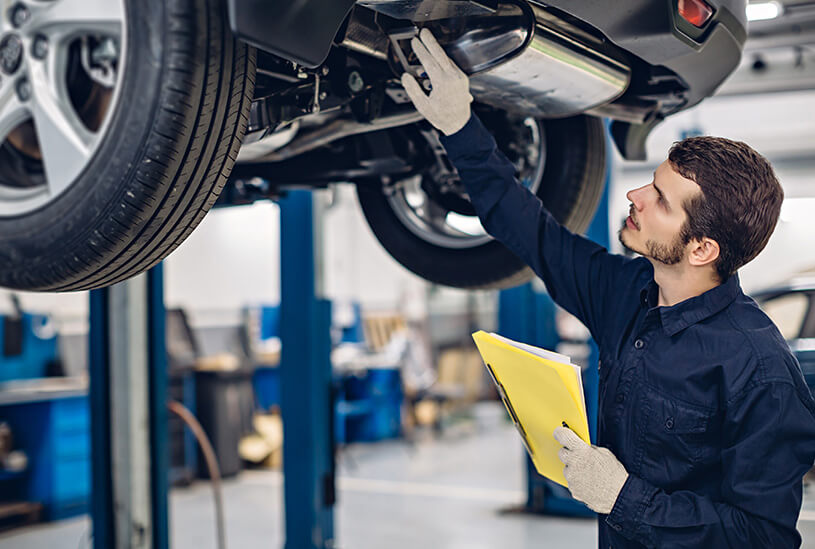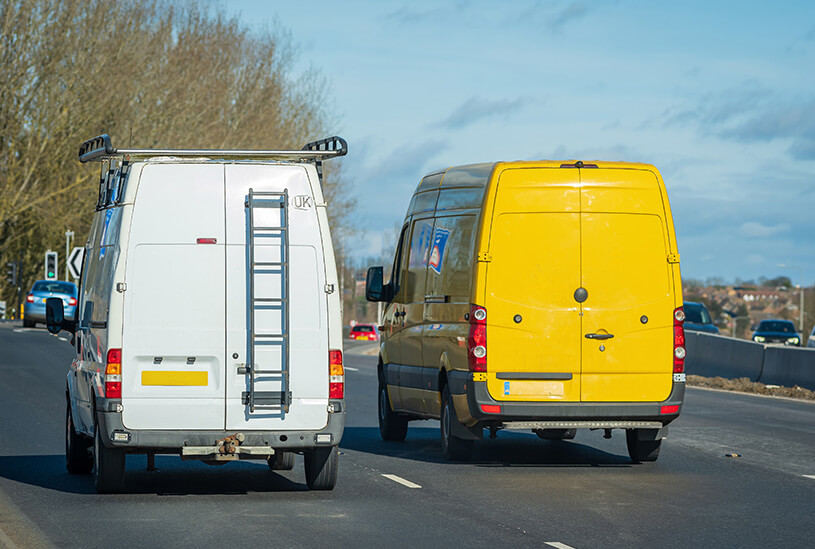If you drive a van or car for work that’s more than three years old, you’ll need to get an annual MOT test.
Read our guide to MOTs for business vehicles to find out when your MOT test might be due, how long an MOT takes, and how much it should cost.
What does MOT stand for?
MOT stands for Ministry of Transport, so an MOT test is a way for the government to make sure that all vehicles are roadworthy.
MOT tests have been around since the 1960s and check a range of factors to make sure a car is safe to drive. These include:
- braking and fuel systems
- seat belts
- engine condition
- exhaust emissions
- gearbox and clutch
You won’t be able to drive your vehicle if it fails an MOT test due to a ‘major’ or ‘dangerous’ problem until they’re resolved. If you do drive a vehicle that failed its MOT due to a ‘major’ or ‘dangerous’ problem, you could be fined up to £2,500, banned from driving, and get three penalty points.
MOTs for business vans and cars: everything you need to know
When is my MOT due?
You can find out your MOT due date by checking your MOT certificate. An MOT is valid for 12 months, so your next due date will be a year on from your most recent test.
If you can’t find your certificate there are lots of ways to check when your MOT is due, including Gov.UK’s vehicle enquiry service.
Your MOT due date is the last day you can get your vehicle tested before driving it becomes illegal, so many drivers like to get it sorted before the due date.
The earliest you can book your MOT test is one month (minus a day) before the due date. For example if your due date is 12 February, the earliest you can get your vehicle test is 13 January.
By getting your MOT done on the earliest date possible, you can preserve the same due date for the following year. If you drive for work, this could be useful when it comes to planning your diary around time when you won’t have your business vehicle.
How long does an MOT take?
The actual MOT test should only take up to an hour. However, you’ll need to take into account that you may not have access to your business vehicle for a whole day. This is because a lot of MOT test centres will ask you to drop your vehicle off in the morning. They’ll then let you know when it’s ready to collect, which could be later in the day.
An MOT could take longer than an hour if there are problems with the vehicle. If the repairs are straightforward, you may get your business vehicle back the same or next day, providing it passes an MOT retest.
If the vehicle has a serious problem, the process could take longer and it may need to be driven to another garage to get fixed.
How much is an MOT?
The maximum cost for an MOT test is set by The Vehicle and Operator Services Agency.
Currently, test centres can charge no more than £54.85 for an MOT.
The cost varies depending on the size of your vehicle. For example, the maximum MOT cost for a motorcycle is £29.65, while the maximum for vans that weigh between 3,000kg and 3,500kg is £58.60.
In most cases, you’ll be able to get an MOT test for less than the maximum price so it’s worth shopping around. What’s more, some drivers get their MOT included in an annual service.
It’s important to note that if your car needs repairing to pass its MOT, this is likely to cost you more.

Mr. Music/stock.adobe.com
If my car fails its MOT, how long do I have to fix it?
There’s no limit on how long you take to fix your business vehicle if it fails its MOT. However bear in mind that if it isn’t roadworthy, it’ll be illegal to drive.
The sooner you get your vehicle fixed could save you money on retest fees and minimise the impact for your business.
If your car has a ‘major’ or ‘dangerous’ fault and fails its MOT, it’ll need to be fixed before you can drive it legally again.
When this happens, there are usually three options available to you:
- leave the car at the test centre to be repaired and get a free partial retest (if the repairs are done within 10 working days)
- take the car away to be repaired and return it to the test centre within one working day for a free partial retest (if the car isn’t roadworthy, it may need to be towed)
- take the car away to be repaired and return it to the test centre within 10 working days for a cheaper partial retest (if the car isn’t roadworthy, it may need to be towed)
How to check MOT history
If you’re thinking about buying a second-hand vehicle for your business, it’s worth checking its MOT history to make sure it’s reliable and roadworthy.
Most car sellers will be able to share this information with you before you buy, but you can also check it yourself.
Using Gov.UK’s online checker and entering the vehicle’s registration number, you can:
- check a vehicle’s past MOT test results
- see what parts failed at each test, and if any parts had minor problems
- find out the mileage recorded when it was last tested
- check when the next MOT is due
- download copies of current and previous MOT certificates
Pre-MOT checklist – 7 things to do before your test
To increase your chances of passing your MOT and limiting the time your business van or car is out of action, there are some things you can check ahead of your test.
Here are seven quick things you can do before your MOT:
- Top up fluids, including oil, brake fluid, and screen wash
- Make sure all your lights are working, from brake lights to hazard lights
- Check the pressure of your tyres as well as their tread
- Test the horn to make sure it still works
- Check the condition of your windscreen wipers
- Give your car a good clean and get rid of any clutter
- Make sure mirrors are clean and intact
Revealed: the most common reasons for failing an MOT test
According to MoneyHelper, 40 per cent of MOT tests end in failure the first time. The website says these are top five most common reasons for first-time failures:
- Screen wash not being topped up
- Dirty vehicles that are full of clutter
- Registration plate issues, from being too dirty, not meeting DVLA rules, or missing altogether
- Windscreen stickers blocking the driver’s view
- Lit-up warning lights on the dashboard
MOT test checklist: what gets checked?
As for the MOT test, here’s a list of the things that will commonly get checked:
- exhaust and emissions
- tyres
- steering
- mirrors, wipers, and windscreen
- brakes and suspension
- headlights, brake lights, indicators, and fog lights
- seat belts and seats
- gearbox and clutch
- engine and fuel systems
- body, chassis, and structure
- number plates
- bonnet, boot, and doors
- interior
- Vehicle Identification Number
What are your top tips for passing an MOT first time? Let us know in the comments below.
Useful guides if you drive a van or car for work
- Fuel card: how can one help your small business?
- Electric cars and vans – should you get one for your business?
- Business car leasing – the ultimate guide for the self-employed
Ready to set up your cover?
As one of the UK’s biggest business insurance providers, we specialise in public liability insurance and protect more trades than anybody else. Why not take a look now and build a quick, tailored quote?
Jevanto Productions/stock.adobe.com
